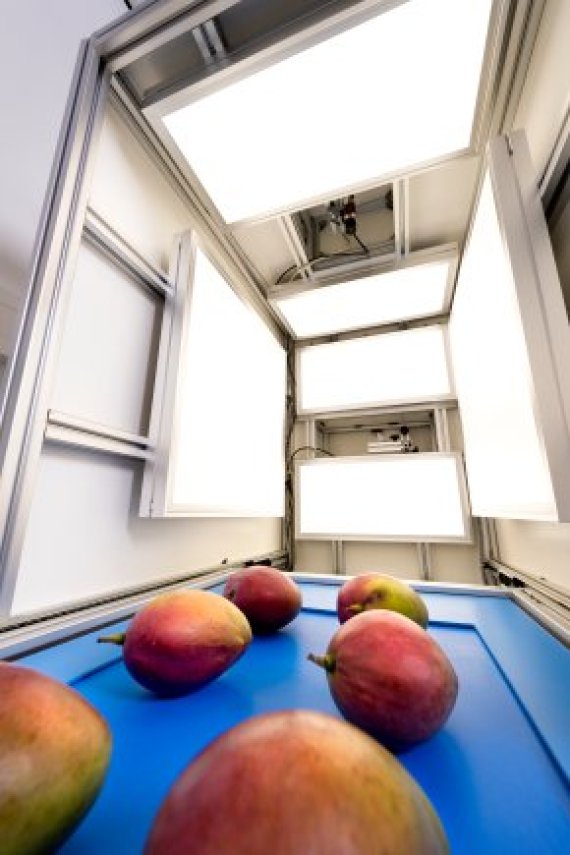Researchers of the Postharvest group at Food & Biobased Research sliced open hundreds of mangos to check if the fruit was rotten. This was done by hand. ‘We even had a special slicing device made at the workshop’, Suzan Gabriëls says. However, before opening the fruit, their composition was measured using a near-infrared spectrometer (NIR).
Colour booth
Following that, all the mangos were photographed in a standardized colour booth. These pictures were then translated to values, in which all brown pixels represent “rotten”, and yellow pixels indicate “healthy” fruit. Using these values, the researchers defined a healthy-brown ratio for each mango. The higher the ratio, the fewer brown pixels.
Following this, the researchers checked whether the NIR measurements revealed the mangos containing rotten flesh beneath the skin with the help of this model. This showed that the predictions were correct in eighty per cent of the cases.
Transport
An excellent result, that will prove useful to mango processors, according to Gabriëls. They will be able to assess the quality of the mango using the spectrometer so that the unblemished mangos can be transported to more remote locations. Average mangos can be sold on local markets, and rotten mangos can be discarded. Globally, some 1.1 million tonnes of mangos are traded annually, representing a value of about 2 billion euros.

 Photo: WUR
Photo: WUR